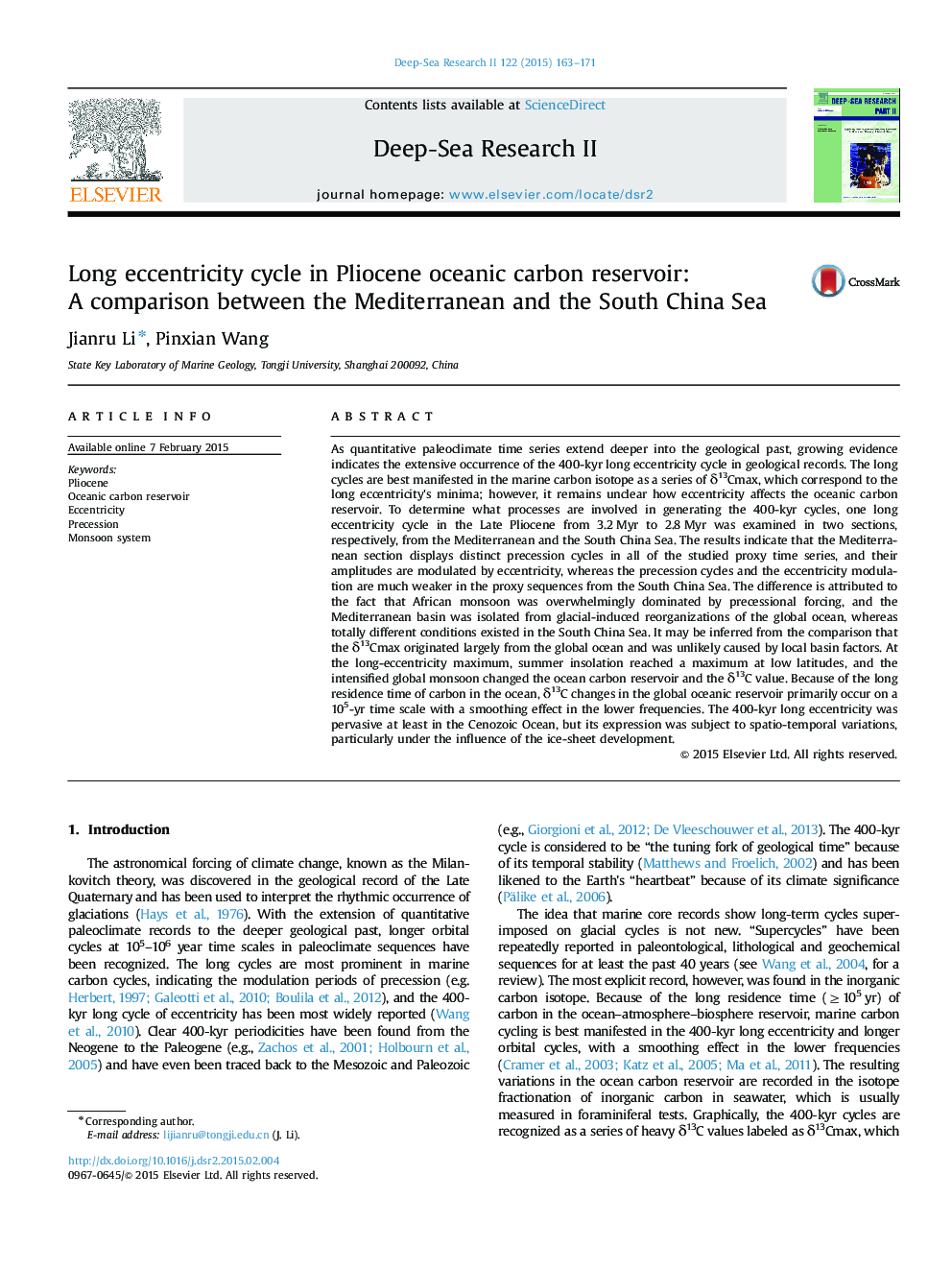| کد مقاله | کد نشریه | سال انتشار | مقاله انگلیسی | نسخه تمام متن |
|---|---|---|---|---|
| 4536169 | 1626419 | 2015 | 9 صفحه PDF | دانلود رایگان |
As quantitative paleoclimate time series extend deeper into the geological past, growing evidence indicates the extensive occurrence of the 400-kyr long eccentricity cycle in geological records. The long cycles are best manifested in the marine carbon isotope as a series of δ13Cmax, which correspond to the long eccentricity׳s minima; however, it remains unclear how eccentricity affects the oceanic carbon reservoir. To determine what processes are involved in generating the 400-kyr cycles, one long eccentricity cycle in the Late Pliocene from 3.2 Myr to 2.8 Myr was examined in two sections, respectively, from the Mediterranean and the South China Sea. The results indicate that the Mediterranean section displays distinct precession cycles in all of the studied proxy time series, and their amplitudes are modulated by eccentricity, whereas the precession cycles and the eccentricity modulation are much weaker in the proxy sequences from the South China Sea. The difference is attributed to the fact that African monsoon was overwhelmingly dominated by precessional forcing, and the Mediterranean basin was isolated from glacial-induced reorganizations of the global ocean, whereas totally different conditions existed in the South China Sea. It may be inferred from the comparison that the δ13Cmax originated largely from the global ocean and was unlikely caused by local basin factors. At the long-eccentricity maximum, summer insolation reached a maximum at low latitudes, and the intensified global monsoon changed the ocean carbon reservoir and the δ13C value. Because of the long residence time of carbon in the ocean, δ13C changes in the global oceanic reservoir primarily occur on a 105-yr time scale with a smoothing effect in the lower frequencies. The 400-kyr long eccentricity was pervasive at least in the Cenozoic Ocean, but its expression was subject to spatio-temporal variations, particularly under the influence of the ice-sheet development.
Journal: Deep Sea Research Part II: Topical Studies in Oceanography - Volume 122, December 2015, Pages 163–171
